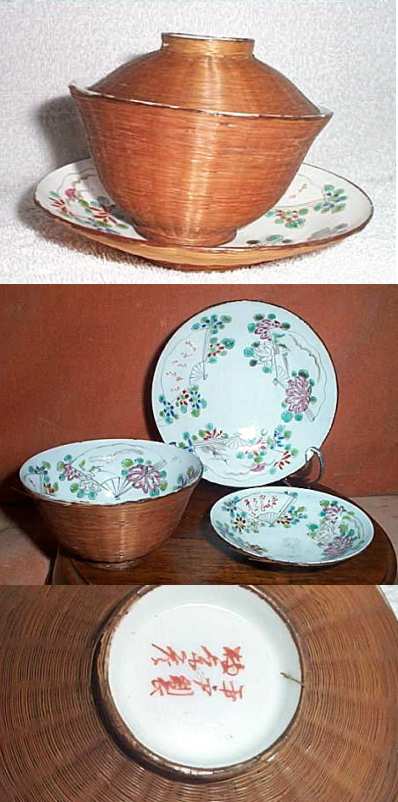
This page is only one of many thousands of Gotheborg.com Help and Information Pages, offering specialized knowledge on Chinese and Japanese Porcelain, including a Glossary, Q&A, Chinese and Japanese Porcelain Marks, Chinese Porcelain Exhibition and Excavation reports etc. For personal help and far more information, join our Discussion Board or use 'Ask a Question' for quick email consultations. For full text and better navigation, use a full-screen device rather than a mobile phone, that offers only limited content.
 I have attached some pictures of some egg shell porcelain I have had for some time. I have not seen anything like this before, but then, I'm not that well traveled!
I have attached some pictures of some egg shell porcelain I have had for some time. I have not seen anything like this before, but then, I'm not that well traveled!
They are almost paper thin, and you would worry about sneezing in the same room as them.
I am curious to know anything about them, and in particular the covering of reeds or grass like fiber that coats the outside of this trio. They are not of high quality, having many flaws, but I love them and would really appreciate you letting me know what you can about them.
This tea set seems to be Japanese. Regarding a date I am not sure but most Japanese porcelain of this thinness dates from the 1930s - but - I don't know this for sure.
The signature looks interesting and might be the decorators or potters signature - but, I don't know that for sure either. I just figure the tea set and the signature looks well above average.
Regarding the matting I have only seen this once before and that was in Holland, on a Chinese porcelain cup I assumed had come there from Jakarta (Batavia) on Java. Because of this my thought about the matting was that it could have some connection to the 18th century fashion of covering the outside of Chinese cups and dishes with a brown glaze. This decoration is called "Batavia" and this brown matting actually gives the same impression at some distance.
When I now see your tea set I find it more likely that the matting is made in Japan and its purposes is to take some of the heat off of warm tea - and - let the tea stay hot longer in the cup.
During the early 18th century tea was brewed directly in the cups with their dishes used as lids. Now, this cup actually have a special lid supplied, which speaks both for the "insulation" idea and a more recent date.
I find your pieces very interesting. Unfortunately it is not much I can say for sure other than - you were lucky to find them. I hope this helps some anyway :-)
Thank you for your interest.
Best regards,
Jan-Erik Nilsson